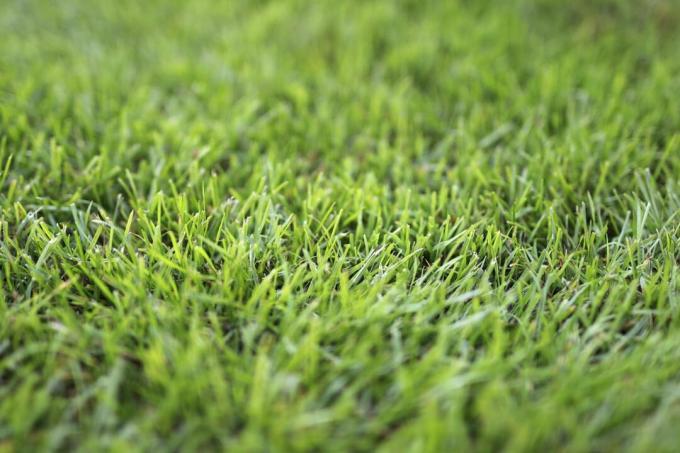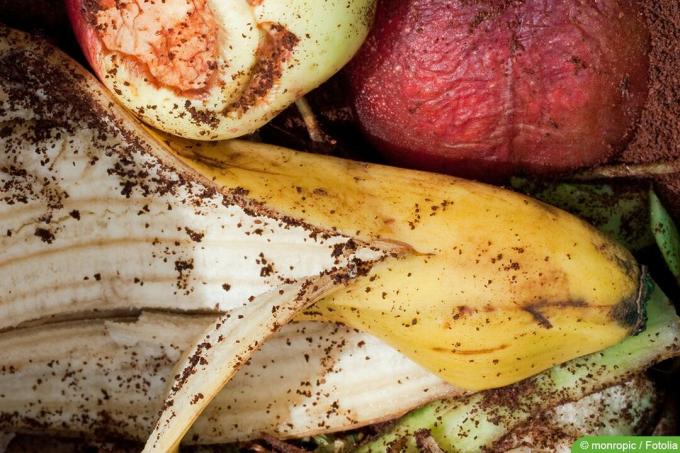

Table of contents
- bone meal
- Bone Meal Fertilizer
- Bone meal as a long-term fertilizer
- use of bone meal
- make bone meal
- blood meal
- blood meal as fertilizer
- make blood meal
- Conclusion
The terms blood meal and bone meal may not sound too pretty, but the substances themselves have it but in itself and can easily and especially long-term minerals and proteins delivery. For these reasons, they have long been popular as fertilizers. Those who value biological fertilizers can still enjoy the benefits of these fertilizers and even produce them themselves.
bone meal
The name already gives an idea of what bone meal is. The substance used as a fertilizer, among other things, consists of ground bones. Beforehand, the bones are freed from leftover meat, tendons and other residues and washed. They are then finely ground in special machines, the so-called bone mills.
As flour, the bones are used, for example, as fertilizer but also as fodder. In both cases it should be known whether the animals from which the bones are derived are in good health because even boiling or otherwise sterilizing at high temperatures will not remove all of them pathogens.
This also led to the ground bones falling into disrepute. As hypothetical carriers of BSE pathogens, farmers did not want to take the risk either by feeding or by fertilizing with the special flour. Eventually, the biological fertilizer was banned by law as a feed additive and source of nutrients for crops. The bans have relaxed. Unfortunately, the bad reputation of the flour made from animal bones has survived. It has some advantages to offer, especially when it comes to fertilization. These include:
- Long-term effect due to slow decomposition
- natural connections
- simple application
- high calcium and phosphorus content
Bone Meal Fertilizer
Calcium and nitrogen as well as a comparatively large amount of phosphorus are contained in the ground bones. Plants need phosphorus on the one hand for strong and healthy growth of the roots, on the other hand for the formation of chlorophyll and thus for all green parts of the plant but also for the flowers and fruits.
One of the functions of calcium in the animal skeleton is stabilization. The same is true of plants. The mineral is built into the cell walls and is involved in stiffening, and it also contributes to functionality. Calcium plays a similar role in the soil itself. It can improve the quality of the substrate by stabilizing the structure. This prevents siltation and – probably less interesting in the garden or bucket – erosion. In addition, calcium promotes biological activity in the soil, has a beneficial effect on the conversion of organic material in the substrate and has an influence on the pH value. In the form of lime, calcium is therefore also used to neutralize or alkalize the substrate.
Nitrogen is probably also well known to most newcomers to gardening and fertilizing and is considered to be one of the most important plant nutrients. Plants need it for growth, it is a component of all enzymes and is therefore required in several ways for the health of the plants. If there is a lack of nitrogen in the soil, this becomes visible very quickly, especially on the lawn. Plants that are actually not wanted, such as clover and dandelions, spread between the grass here.

Bone meal therefore provides plants with important nutrients that promote healthy growth and can continue to improve the soil.
Bone meal as a long-term fertilizer
The ground bones are an organic substance in which the minerals are bound. They are therefore not immediately available to the plants. First of all, they have to be processed accordingly by the soil dwellers. The processes required for this begin shortly after the natural fertilizer has been discharged, but continue for years. This makes bone meal wonderfully suitable as a long-term fertilizer.
use of bone meal
Since the components first have to be broken down by the creatures present in the soil, the plant does not benefit from fertilization directly at the roots. Instead, the flour should be mixed into the substrate so that it can slowly decompose and provide the plant with long-term care.
However, there are various options for using the fertilizer:
- placed on the ground and worked in loosely
- mixed into the substrate when planting a crop
- sprinkle when digging and roll the substrate
Due to the long-term effect, bone meal should only be used every two to three years.
make bone meal
Due to the prevailing risk of BSE and the resulting scandal, bone meal came into disrepute. There are now strict guidelines, but the flours are hardly used in agriculture anymore, but they are still interesting for hobby gardeners. You will also find use in feeding cats and dogs as a food additive.
If you want to be absolutely sure, you can even make bone meal yourself. This is particularly useful if you are slaughtering yourself and the bones would otherwise not be used. A so-called bone mill is required for the production. Models for home use are affordable, but they usually only hold very small bones, which is why they have to be crushed in advance.

They should also be clean, dry and free of meat residue. These would otherwise lead to decomposition, which, among other things, would affect the shelf life of the fertilizer.
The storage should meet the following requirements:
- dry
- airtight
- cool
Otherwise, the bone meal could go moldy or decompose and decompose during storage.
blood meal
Blood meal is usually made from chicken blood. During production, it is first dried and then pressed or ground. As a fertilizer, the powder is often reconstituted and administered in liquid form. However, it can also be used dry and is often mixed with bone meal.
Blood meal is particularly rich in nitrogen and contains proteins, minerals and trace elements. The already mentioned nitrogen is beneficial for plant growth and an important plant food. The trace elements and minerals contribute to a high-quality and stable soil structure. The iron deserves a special mention here.
If plants suffer from an iron deficiency, they show this clearly. Instead of green leaves, these are yellow to light yellow. The leaf veins remain green for a long time and are therefore often clearly visible. Then at the latest it is time for an additional supply of iron, which is very easy to do with blood meal. The trace element makes the leaf color greener and fresher again. For this reason, iron fertilizers are often used to really make your lawn greener. However, unlike blood meal, iron fertilizers are toxic. Here the natural fertilizer is a clear advantage.
Tip:
Due to the high iron content, blood meal can have a coloring effect on planters, paving stones and the like. The stains are difficult or impossible to remove. Therefore, great caution should be exercised when using the fertilizer.
blood meal as fertilizer
As mentioned, blood meal can be used as a fertilizer in both liquid and dry form. As a liquid fertilizer, they are placed directly on the ground. As a powder, on the other hand, it is advisable to work it into the substrate and mix it in, just like with bone meal. As in bone meal, the nutrients in blood meal are in an organic, bound form.
In contrast to these, however, they can be decomposed more quickly and easily by the microorganisms in the soil and are therefore available to the plants in a shorter time. However, this also means that they are used up more quickly. It is therefore advisable to combine blood and bone meal. Due to the components of the dried and ground blood, the nutrients quickly reach the plant via the roots. If the supply decreases, the microorganisms have had time to decompose the bone meal.

In combination, blood meal and bone meal are both a fast and long-lasting effective fertilizer. They are also used to improve soil quality. The blood enriches the deposits of trace elements and nitrogen and, due to its protein content, is a veritable “fodder” for beneficial soil dwellers. This means that microorganisms and other living beings are increasingly attracted, thereby increasing the soil quality. The ground bones, on the other hand, stabilize the soil structure and thus also contribute to the quality of the substrate.
Tip:
In order to increase the availability of the blood meal or its components, it can be spread dry and the soil then moistened. It can also be dissolved in water and the plants watered with it.
make blood meal
Blood meal is dry and therefore more durable. As a finished liquid fertilizer, they usually also contain preservatives so that they actually remain liquid and do not spoil.
If you want to use blood for fertilization, you can also use it in other ways. The simplest variant is to dilute fresh blood from your own slaughter or a trustworthy source with water and use this for the watering. There is no drying at all here. The blood can instead be frozen and thawed as needed.
Alternatively, the blood can be dried and preserved in this way. To do this, proceed as follows:
The blood is placed in flat vessels with as large a surface as possible to promote evaporation. The thinner the layer of blood, the faster it dries.
The animal blood is dried in the oven at 50°C or left to stand for a day or two until it dries. However, caution is advised here, as mold can form on the nutrient-rich liquid in the air and when drying without an oven.
When the blood has dried completely and no longer appears gelatinous or appears to have a wet sheen, it is broken out of the containers. The mass should appear stiff and brittle, not leathery, before it is further processed.
The fragments can now be ground into a powder in a blender, coffee grinder or mortar. The resulting blood meal should be stored dry, airtight and cool.
Tip:
Adding rice grains can preserve the pourability and thus simplify later use as fertilizer. In addition, great care should be taken to ensure that the blood meal is really dry before it is stored.
Conclusion
Bone meal and blood meal can be made by yourself under certain conditions, but they are wonderful and easy-to-use fertilizers for ornamental and crop plants. While fresh blood and blood meal ensure a quick and short-term supply, bone meal is a simple and inexpensive long-term fertilizer. The combined application in the garden is optimal and involves little effort.
 garden editorial
garden editorial I write about everything that interests me in my garden.
Learn more about fertilizing

Make effective nitrogen fertilizers yourself lawn fertilizer
In order to develop optimally, plants need sufficient nutrients. For example, nitrogen, one of the main nutrients, is indispensable. If this is not present in sufficient quantities in the soil, satisfactory growth cannot take place. As a result, it must be delivered.

Dried banana peel as fertilizer | Application tips
Bananas are popular and healthy. The banana peel usually ends up in the trash. But it is far too good for that, because the dried shells are an excellent fertilizer for a variety of garden plants.

Horn meal: with fertilizer against clover in the lawn | 7 tips
In the lawn, clover is usually undesirable. With too little fertilization, however, it spreads quickly. Horn meal can help as a biological fertilizer. See this article for tips on how to use it.

Unusual Fertilizers | 13 home remedies that can do more
Much of what accumulates in the household and usually ends up in the organic waste bin can be used to fertilize garden and/or indoor plants. They offer an ecological alternative to mineral fertilizers and score with environmental compatibility and sustainability.

Fertilizer for roses: 15 home remedies for fertilizing roses
In addition to rose fertilizer, numerous home remedies are also suitable as nutrient suppliers for roses. We present the most popular ones in this article!

Fertilize properly | What good is low-nitrogen fertilizer?
No plant can survive without nutrients. Only with optimal and needs-based care can they develop magnificently, bloom lavishly and bring rich harvests. As a result, fertilizer plays an important role in care, provided the ingredients and dosage are right.



